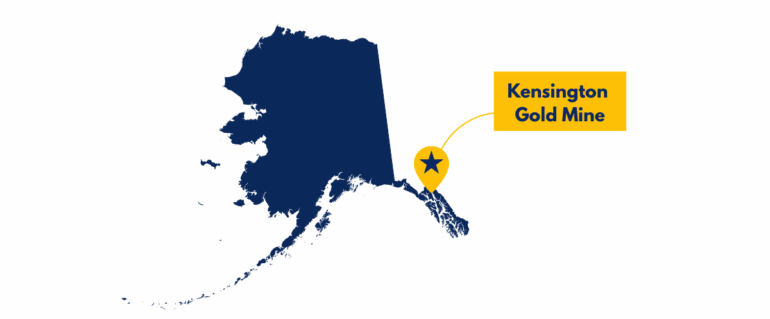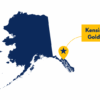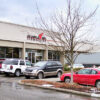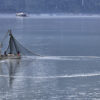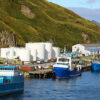Mining has long been a cornerstone of Alaska's economy, from gold rush history to today's high-tech operations that power rural jobs and exports. Among the state's active mines, the Kensington Gold Mine north of Juneau plays an important role in keeping Alaska's gold mining industry strong. Let's take a look at how the mine operates deep within the Tongass National Forest, its unique processing methods, and the economic benefits it brings to the state.
Kensington Gold Mine, operated by Coeur Alaska, is a major underground operation situated in a remote part of Southeast Alaska, approximately 45 miles north of the state capital, Juneau. The mine runs continuously, 24 hours a day, extracting gold from deep within the mountains.
The Kensington Mine is classified as an underground, hard-rock mine, where workers dig tunnels deep into the mountain to reach the valuable ore. Because the site is so remote, it is situated inside the Tongass National Forest. It can only be reached by boat or plane. To get to work, many of the approximately 380 employees take a boat ride along the scenic Lynn Canal. Many workers live in camp facilities at the mine site for their shifts, which often last two weeks, before returning home.
Kensington Mine: Key Facts
- Location: 45 miles north of Juneau, Alaska.
- Commodity: Gold, mined from deep underground.
- Gold Form: Primarily found in the mineral calaverite.
- Concentration Method: Froth Flotation (no cyanide used on-site).
- Tailings Disposal: Unique U.S. exception allows disposal in Lower Slate Lake.
- Employment: The second-largest private employer in Juneau.
- Projected Mine Life: Extended through 2029.
Gold Extraction Method: Froth Flotation
The gold found at Kensington is unusual. Most of the gold isn't in pure form; instead, it is chemically locked inside a mineral called calaverite. This makes the gold difficult to separate from the surrounding rock. To deal with this, the mine uses an on-site facility that runs a specialized process called Froth Flotation to separate the gold-bearing minerals.
The process involves several steps. First, the rock brought up from the mine is crushed into an incredibly fine powder, creating a muddy mixture called a slurry. Special chemicals are then mixed into the slurry. These chemicals are designed to coat the gold-containing minerals, making them repel water (hydrophobic). Air is pumped into the mixture, and the gold-coated minerals cling to the air bubbles and float to the surface, forming a thick layer of foam, or "froth." This mineral-rich froth is skimmed off and dried. It is now a gold concentrate, a fine powder that is rich in gold. This concentrate is then shipped to specialized refineries elsewhere for the final step of turning it into pure gold. The remaining rock material is waste, called tailings.
Economic Impact and Future
The Kensington Mine is a significant contributor to the local economy. It is the second-largest private employer in Juneau, providing hundreds of jobs and contributing significantly to the local tax base. The mine continues to invest in its future. Recent exploration has discovered new high-quality gold deposits, extending the projected operational life of the mine and ensuring it will remain a source of jobs and revenue through at least 2029.

